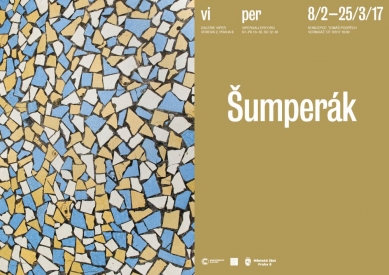
Šumperák
Pořadatel
Galerie VIPER
Místo konání
Galerie VIPER, Vítkova 2, Praha 8
Start
wed 08.2.2017 13:00
End
sat 25.3.2017 18:00
vernissage
tue 07.2.2017 19:00
Odkaz
vipergallery.org ...
Galerie VIPER
Místo konání
Galerie VIPER, Vítkova 2, Praha 8
Start
wed 08.2.2017 13:00
End
sat 25.3.2017 18:00
vernissage
tue 07.2.2017 19:00
Odkaz
vipergallery.org ...
Exhibitions
Publisher
In autumn 2016, exactly fifty years had passed since the first family house of type V, designed by architect Josef Vaněk, was completed in a village near Šumperk. Under the commonly used name šumperák, it became a phenomenon, the most widespread type of house that soon flooded Czechoslovakia. The success of the house can be attributed to the contemporary demand for individual housing and its relatively easy and inexpensive realizability through self-help using readily available materials.
The exhibition builds on a book published last year by Tomáš Pospěch and Martina Mertová, and serves as a certain extension of it. In several variations, it explores the interpretive possibilities of the šumperák phenomenon. It aims to highlight the series of changes of the šumperák while also indicating its complexity. Photographer and project author Tomáš Pospěch explains, “At the beginning of my interest was a simple fascination with the series. More than four and a half thousand of these houses were built. Behind them all lies the same idea, a plan.” Thus, the exhibition reflects on the question of originality and seriality in architecture.
Concept: Tomáš Pospěch
Collaboration: Martina Mertová, Barbora Špičáková
The exhibition builds on a book published last year by Tomáš Pospěch and Martina Mertová, and serves as a certain extension of it. In several variations, it explores the interpretive possibilities of the šumperák phenomenon. It aims to highlight the series of changes of the šumperák while also indicating its complexity. Photographer and project author Tomáš Pospěch explains, “At the beginning of my interest was a simple fascination with the series. More than four and a half thousand of these houses were built. Behind them all lies the same idea, a plan.” Thus, the exhibition reflects on the question of originality and seriality in architecture.
Concept: Tomáš Pospěch
Collaboration: Martina Mertová, Barbora Špičáková
The English translation is powered by AI tool. Switch to Czech to view the original text source.

0 comments
add comment










